Introducing the foods of Korea and all the countries of the world in a 10-day run
You might have noticed, if you have watched Korean TVs, that almost all the TVs and other print and digital media in Korea are all out in presenting cooking demonstrations, giving tips on what to each and what not to.
What to eat and how to have become a popular topic of discussion in Korea today as the people want to live long and in good health.
The people have come to realize that what they eat and drink has a lot to do with their happiness as well as health.
Cooking used to a job looked down upon in the past as a job of the low-class people. This has changed. Now people who do the cooking are no longer called cooks but a ‘Shepu’ (deriving from chefs) and, of course, make a lot of money.
In this process, use of the Yuginong (organic) foods is on a sharp increase in Korea as the people believe that it promotes their health and happiness. People try to stay away from fast food as they realize more and more that the ‘junk’ food hurts their health and takes away their happiness.
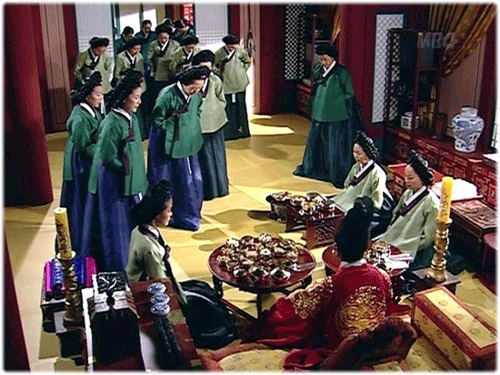
Against this backdrop, the Namyangju City, less than an hour from Seoul, is hosting the Namyangju International Slow Life (Food) Festival starting on Thursday Oct. 8, 2015 in a 10-day run through Oct. 9. At the opening ceremony, Governor Nam Kyung-pil of the Gyeonggi Province and Mayor Lee Suk-woo of the Namyangju City are inviting the ambassadors and spouses as special guests. (Call 2298-1740/2 or 1745/6 for invitation delivery failures.)
An estimated 500,000 Korean and international tourists and visitors are expected to visit the different food and beverage pavilions and booths sampling and relishing the delicacies of the different countries of the world.
Earlier in 2013, Mayor Lee successfully hosted the International Slow Food Festival and the Festival this year, in effect, is an extension from that international food fair.
There are many interesting programs throughout the 10-day period of the Festival. They include the following:
At the Slow Life Innovation Pavilion:-
Food table of world citizens Realizing the values and themes of the Slow Life food culture from a comprehensive viewpoint covering agriculture, food, health, man, education and environment.
Food show: Ten-day tour of the world with the star chefs
Slow Life Adventure: A new-concept workshop of everyday experience and enjoying
Encounter with masters: Appreciating the outstanding needle work, knitting work and wood work done by the handicraft masters of the Republic of Korea
Slow Life Education: Selection of food and responsibility, locality and culture, society and environment, various aspect of food life.
Rest Caf?: Share with your family and friends the beautiful music pleasant talks over a warm cup of tea.

Good Food Pavilion:-
Traditional foods of the world: Traditional handicraft items, special products of different countries and exotic foods and sights from Asia and Europe will be ready for display and sale.
Nations Day: World Traditional, Folk Culture Parade
Good Food Restaurant: Pasta, Paella, Quesadilla, Tarkari and other traditional foods of eight different countries can be sampled and enjoyed at the Good Food Restaurant:
World’s Wine and Beer: Special and characteristic traditional wines and beers of the different countries will be prepared for sampling by the visitors.
Good Life Pavilion:-
Korea (Gyeonggi province):
-Representative foods of their 31 different cities and counties of Korea and Gyeonggi Province and traditional alcoholic beverage
Environment-friendly organic farming:
-Meeting between producers and consumers, a place for communication
-Introduction, exhibition and sale of environment-friendly organic products
Special Exhibition:
Surprise Event Day with everyday food table with apples, milk, Korean rice and Hanu beef.
Cooking Contest
-Pleasant experience in cooking food using local food materials that are safe and good for health.
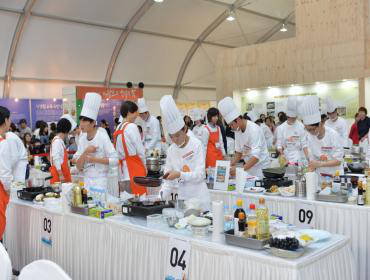
Children’s Experience Pavilion:-
Slow Life Humanistic Education
Slow Life Kids Gusto
Venue of a Comprehensive Humanistic Education for Children with a combination of fun, curiosity, games and education
Masters and Masterpieces Pavilion:-
Art Fair: The bowls and hair pins that I made Aesthetics of the daily necessities
Exhibition of masterpieces made by masters: A high-class exhibition of works of the Korean masters and masterpieces created with the meaning and philosophy of
Slow Life Farmers’ Market:-
Joan Slow Market Place
Joan Slow Market Place of the Namyangju City, the mecca of organic farming and the first slow city of the Capital Zone
Slow Cities of the entire Republic of Korea
Exhibition, sampling and sale of the special products and local masterpiece products of the Slow City regions of the 11 cities and counties across the country
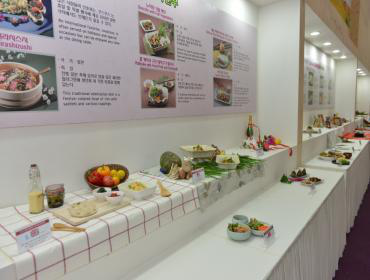
Open-air Experience Site:-
Slow reading: Take a moment to slow down and enjoy some literature and delightful conversation.
Empathic experience of the ecology: Making of various handicraft items and souvenirs that remind you of the traditional sapidity and wisdom of the bygone days
Slow Healing Performances:
-All the performers from amateur club members to professional performers.
Various performances and shows are presented at the permanent stage of the Slow Square, including dances, songs and talent shows
Food cultures of the world:-
Street foods of the world: Sampling and sale of various street foods of the 30 different countries of the world
Food Culture Street: Experiencing the Korean food of the past, culture and tradition at the traditional market of the by-gone days, where the visitors can sample and buy
Slow Restaurant: Table setting of healthy food cooked with environment-friendly organic food materials and savory cooking skills
Dessert Cafe Street: Sampling and sale of hand-made sweet desserts made with healthy food materials and elaborate cooking skills
International Conference:-
International Conference: Provides an international forum with Korean and international experts to discuss topics of Slow Life humanities and common issues faced by the world in sharing and promotion of happiness based on the philosophy of Slow Life and its practicing

Welcome message of Mayor Lee Suk-woo of Namyangju City:-
Today, the efforts to newly understand the value of food is spreading all over the world.
During preparing and eating food, people talk about farming, turning their attention to health and environment, and thinking of love for family and relationships with others.
The words traditions, in-season, eco-friendly, no artificial additives, and locals now become the standards for good food.
Until now, we have believed that joys of life only comes from a proper and healthy meal, thus only focused on not changing or reducing the values of food while carrying ingredients from farms to our tables.
‘What do we eat?’, ‘how do we eat?’, and ‘whom do we have a meal with?’
The pleasure from sharing food is among the best in various functions and roles of meals.
Sharing even a simple meal is worth more than anything in the world.
It is why we cannot hesitate to develop an eye for investigating our own meals. Food is for eating, whereas meal is for life.
Every human being has a universal right to pursue happiness.
Slow Life is a tool for the value of more universal happiness.
The value of Slow Life of health, environment, and empathy is good food and mind on table.

We learn lessons about economy, society, culture, and future with harmony between consumers and producers based on the 3 agriculture-related teachings (三農) of Jeong, Yak-Yong: income security for farmers (厚農), convenient farming (便農), and farmer empowerment (上農). The value and philosophy of Slow Life have their roots in Silhak (實學, represents practical learning in Korean) of Dasan. It is our responsibility to grow a greater tree, the world of Slow Life.
The Mecca of Korean organic farming, the center of Slow Food Movement in Korea, the first slow city in Seoul Capital Area, the slow reading for better ideas, the slow walking with others for hope. The footsteps of Namyangju city for the Slow Culture are proper being the calling of the time.
Now, we are preparing the 2015 Namyangju Slow Life International Festival, ‘the meal sharing with people from around the world and festival of food and life’ inheriting the International Organic Expo in 2011 and the AsiO Gusto in 2013.
Now, Namyangju city begins to walk with others, prepare global meals for people, and share happiness enough to make everyone all over the world laugh in Slow Life.
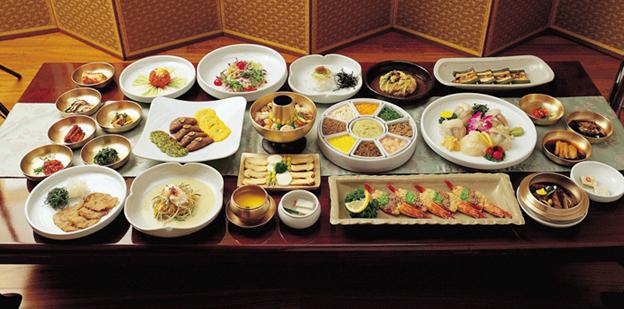
Dasan Forum on ‘Slow Life Planet, on Slow Life!’
Mayor Lee Suk-woo of the Namyangju City on the eastern outskirts of Seoul hosted the 1st Slow Life Forum on Humanity as part of a series of academic meetings of the 12th Namyangju Slow Life Planet Festival at the aT Center in southeastern Seoul on July 29, 2015.
The main topic of discussion was the relationship between the thoughts of famed Joseon Dynasty Scholar Dasan Jeong Yak-yong and the Slow Life of the Namyangju Slow Life Planet Festival slated on Oct. 8-17, 2015.
Dasan is noted for his wide range of knowledge and also for his personal integrity as a scholar and also as a ranking official of the Joseon Dynasty Court.
The Forum began with introductory remarks by Mayor Lee Suk-woo who explained the Three Main Principles of Dasan on Farming and their relationship with the Slow Life of the Slow Life Festival of Namyangju.
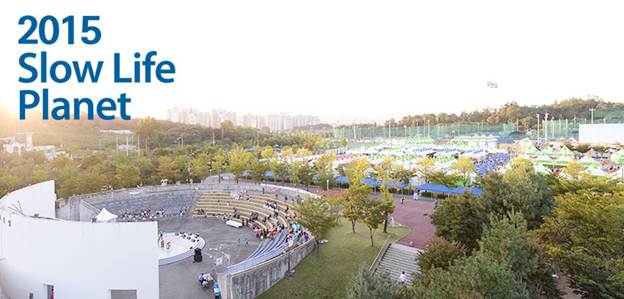
Dasan, who was born in Namyangju in 1762, advocated Pyeonnong (make farming easier through mechanization and improved irrigation), Hunong (help farmers become rich) and Sangnong (improve the social status of the farmers).
The first speaker was former Minister of Agriculture Kim Sung-hoon (chairman of the Organizing Committee of the Gwangju Kimchi Festival and now professor emeritus of Chungang University in Seoul) and the second speaker President Park Suk-moo of Dasan Research Institute (chair professor at Sungkyunkwan University).
Professor Kim said that there was not much different between the past and present in terms of extortion of the powerless farmers by the rulers and the merchant class and stressed the importance that farmland must belong to the tillers.
Then he said that Korea has achieved a measure of economic development and growth by virtue of the so-called Bballi Bballi (Quickly Quickly) culture but that now it was time the Korean people had given some serious thought to seeking ‘Slow Life’ to make their living a bit easier.
The next speaker, Professor Park, said that there was Dasan’s philosophy in the Slow Life, the main theme of the Namyangju Slow Life Planet Festival, whereas Dasan, when he was exiled to a remote countryside for 18 years by the court for his candid advices to the king, did not fret or get nervous but used the 18 years for his continued academic pursuits in search of ways to improve the government administration for the benefit of farmers and the distressed class of people.
Following the speeches, the Forum appointed advisors for the 12th Namyangju Slow Life Planet Festival, who included Publisher-Chairman Lee Kyung-sik of The Korea Post.
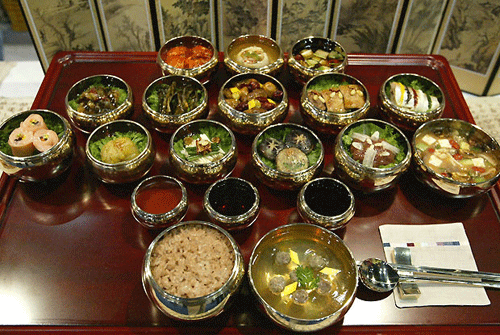
Food tables of the Kings of the past dynasties:-
How many meals did the Korean kings have a day? Records indicate that they had five meals a day which was called Surasang, or Royal Table. Early in the morning they had a small bowl of Juk (gruel), regular breakfast, lunch, dinner and late-night snack or meal (related story on page 11).
Early in the morning the kings also had herb medicinal meal or Mieum (thin rice gruel) instead of Juk, breakfast at around 10 o’clock in the morning, dinner at around 5 in the afternoon and lunch between breakfast and dinner. For the late-night snack, the kings had Yaksik (flavored glutinous rice), Sikhye (‘rice punch’ or sweet drink made from fermented rice or) and/or milk gruel.
The king never had their meal together with the queen. The queen had her meal separately from the king.
Reflecting the regionalism of the kingdoms and bordering countries of the peninsula, the cuisine was borrowed from each of these areas to function as a showcase. The royalty had the finest regional delicacies sent to the palace. Although there are records of banquets pre-dating the Joseon period, the majority of these records note a vast variety of foods without mentioning the specific foods present.
The meals cooked for the royal family were not seasonal, like a commoner's meal. Instead, they varied significantly day to day. The eight provinces were represented each month in turn in the royal palace by ingredients presented by their governors. This gave the cooks a wide assortment of ingredients to utilize for royal meals.
Food held a very important place in Joseon period. During the Joseon Period, Yejo (Board of Rites) was responsible for foods prepared for ancestor rites, attaining wines and other beverages, and medicinal foods. There were also hundreds of slaves and women who worked in the palace that had tasks such as making Dubu, liquor, tea, and Ddeok (rice cakes).

